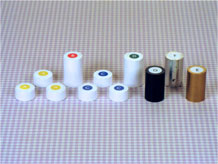Inferring material composition from weight and size
In the final density task, students are asked to figure out whether a covered object could be made of one of the three materials, brass, aluminum, and Delrin. They have at their disposal uncovered objects of known material as well as multiple copies of covered objects (see objects in Figure 9). There is also a balance scale and ruler available for them to use if they choose.

Figure 10: Covered and uncovered cylinders used in the last task. The challenge is to determine whether or not the covered cylinders (A-D) might be made of the same material as E (brass), F (aluminum), G (Delrin, a type of plastic), or something else. Multiple copies of all the covered cylinders are available, including B and D. A balance scale and ruler are also available for children to use.
At issue is how children make their inferences about an object’s material. Do they focus simply on weight, or consider the relative size and weight of the objects? Do they not only lift the objects, but use the scale? (It is hard to distinguish the weights of G and D, but G is clearly heavier if they put them on the balance scale.) Do they think to use the stacking strategy — for example, stacking 3 small A’s or B’s to make a cylinder the same size as the uncovered cylinders E, F, or G — in order to infer what material A or B is made of? How do they explain and justify their choices?
In fact, B is the same size and weight as F (aluminum) and is made of aluminum. D is lighter than G (Delrin), and made of something else (a different kind of plastic). A is the same weight as F (aluminum) but one-third the size; if children think to stack the “extra copies” of A, they can determine that 3 A’s match E (brass) in size and weight and conclude A is also made of brass. C is not equal in weight to any of the objects; however, 3 C’s match F (aluminum) in height and weight; C is also made of aluminum.
In response to the questions “What might B (or D) be made of?” — where the unknown material cylinders were the same size as the identified ones — the Treatment and Control groups showed similar proportions of correct answers. By the end of grade 5, approximately 90% of children made the correct inference that cylinder B was made of aluminum. Inferring that cylinder D must be made of something else was harder (about 60% correct at the end of grade 5) because without using a scale, children often thought D and G weighed the same and hence concluded they were made of the same material.
In the cases of cylinders A and C, where the unknown material cylinders were of a different size from the identified cylinders, children needed to consider both information about weight and size to be correct and the performance of the two groups began to diverge. While in third grade the two groups performed at about the same level, in 4th and 5th grade the Treatment group showed better results than Controls in both tasks (see Figure 11 and Figure 12).
The significant increase in task C is an important achievement since task C seems to be a harder task than task A: Cylinder A feels heavy and the large brass cylinder is heavy too; correct answers to A may have been achieved by some by a process of elimination of all the other identified cylinders because they all feel lighter.
Figure 11. Percent of Treatment and Control students who correctly inferred that A was made of brass grades in 3 to 5. Figure 12. Percent of Treatment and Control students who correctly inferred that C was made of aluminum in grades 3 to 5.Precise answers to questions regarding cylinders A and C require making inferences about material composition from information about weight and size. Availability of three small A or C cylinders allow us to examine whether children “stack” these in order to make a cylinder the same size as the uncovered cylinders E, F, and G. In both tasks, the Treatment group used this “stacking” strategy more often than did the Control group. Further, the Treatment group showed a highly significant increase in the use of “stacking” from grade 3 to grade 5; that is, they were beginning to control for differences in volume before comparing weights. This form of compensation is tantamount to a “relativizing of weight” that underlies the concept of weight density as a ratio of weight to volume. In contrast, there was no significant increase in “stacking” for the Control group.
Those control and treatment students who did stack the smaller cylinders were much more likely to solve the problem (95% and 80% respectively). This suggests that understanding density is related to the ability to compare values on one constituent dimension (e.g. weight) while matching values on the other dimension (volume). Note that this skill is unrelated to their ability to define the term density. In fact, none of the students interviewed in grade 4 was able to successfully define the concept.



